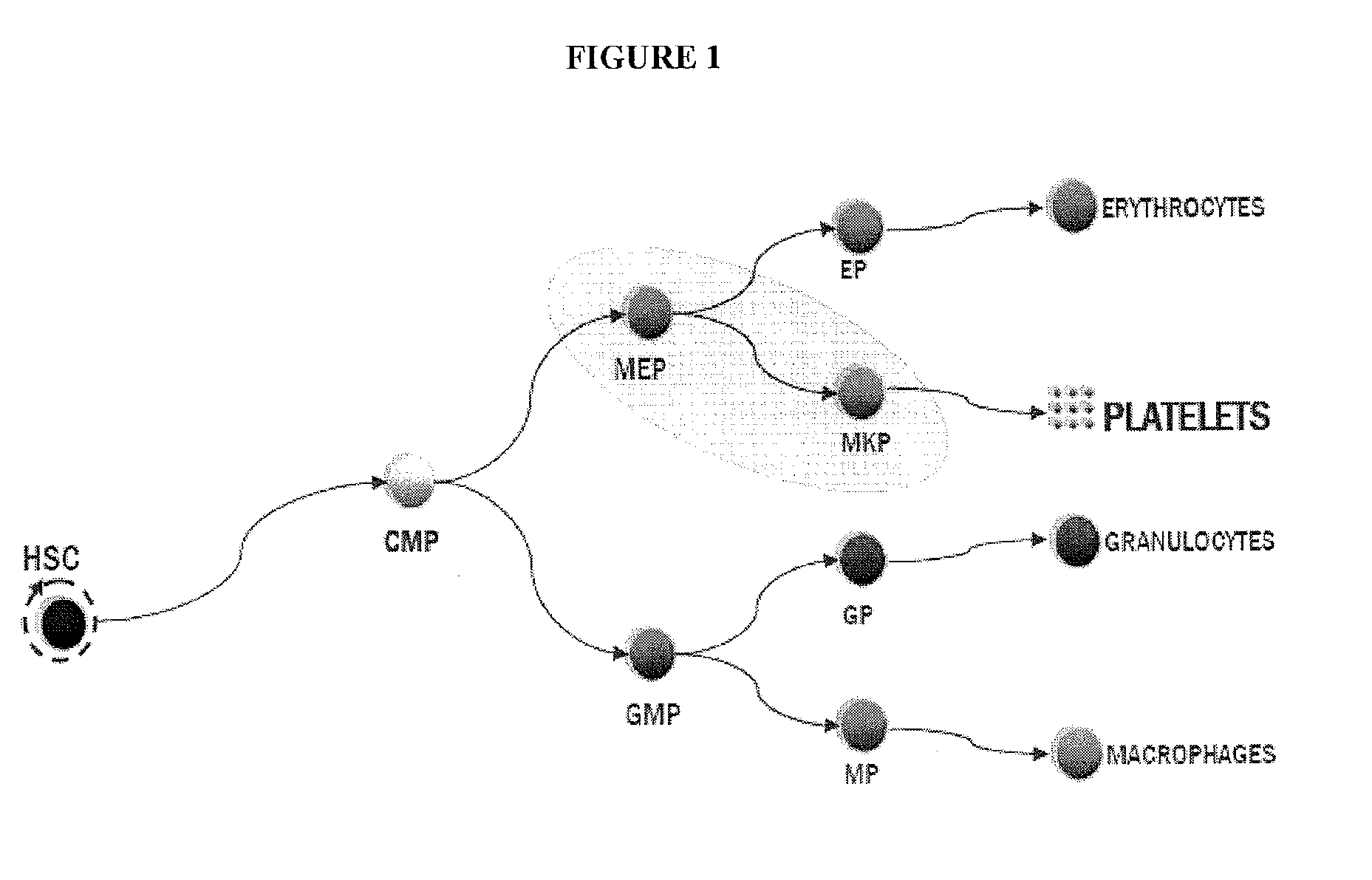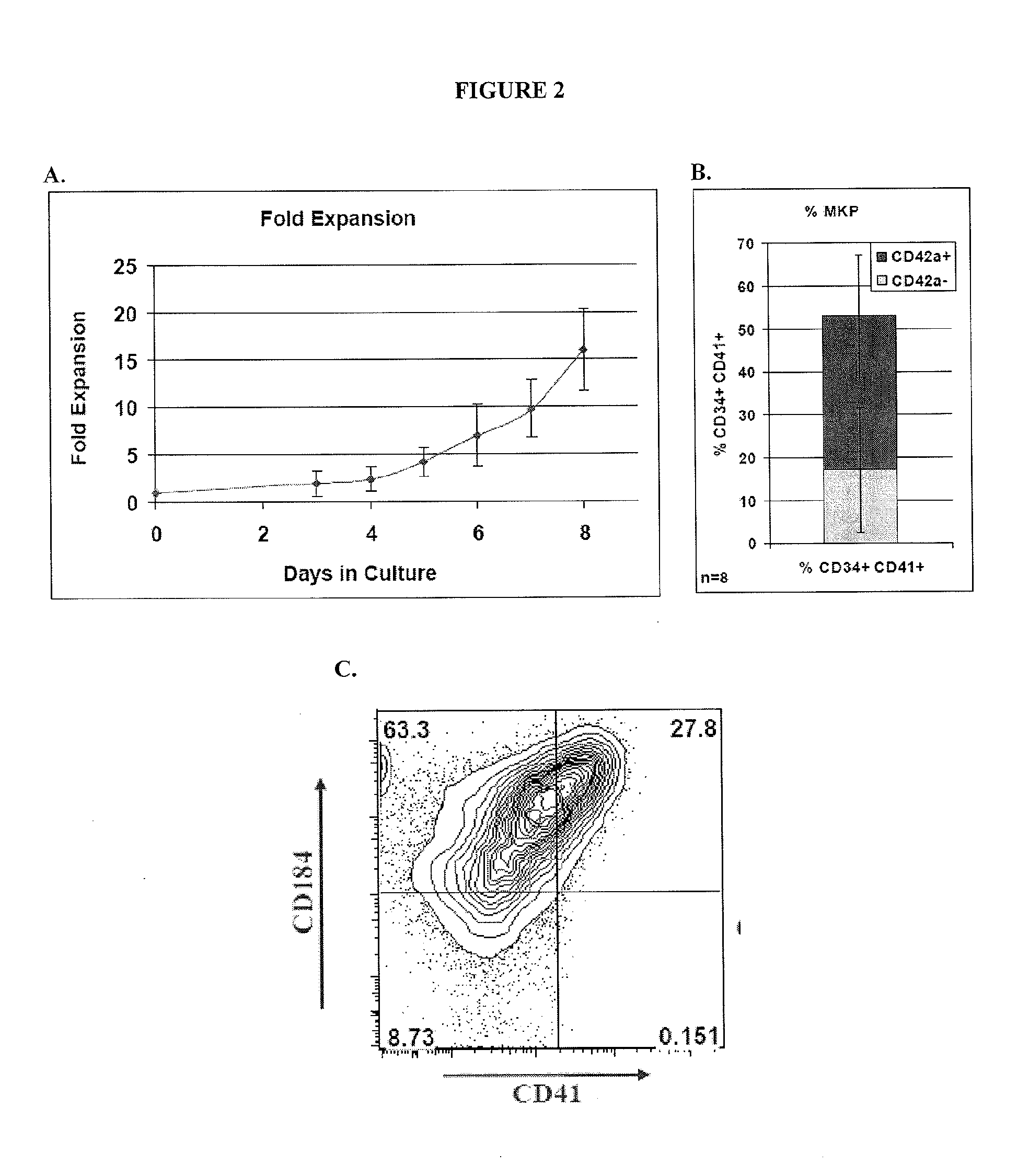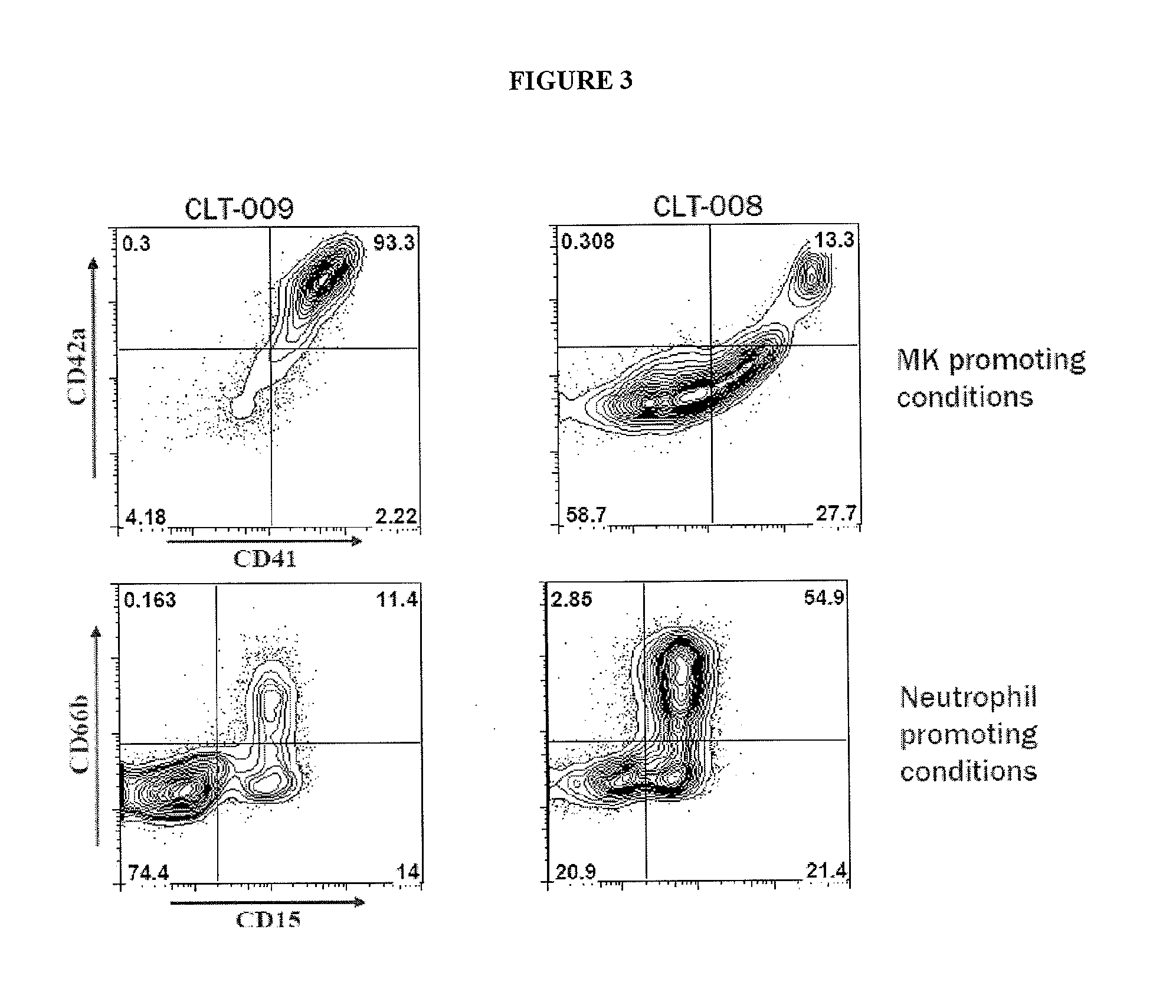Megakaryocyte progenitor cells for production of platelets
a technology of megakaryocytes and progenitor cells, applied in the direction of biocide, drug composition, extracellular fluid disorder, etc., can solve the problems of neutropenia (reduction of white blood cells), increased bleeding risk, spontaneous bleeding, etc., and achieve the effect of high platelet number
- Summary
- Abstract
- Description
- Claims
- Application Information
AI Technical Summary
Benefits of technology
Problems solved by technology
Method used
Image
Examples
Embodiment Construction
I. Introduction
[0045]Provided herein are megakaryocyte progenitor cells (MKPs) that rapidly produce significant numbers of platelets when administered in vivo. The increase in circulating platelets persists in the recipient for several weeks. Further provided are methods and compositions for generating the high platelet-producing megakaryocyte lineage cells from hematopoietic stem cells (HSCs) in the absence of feeder cells and serum. The megakaryocyte progenitor cells (MKPs) described herein can be used, among other things, to treat thrombocytopenia and related conditions.
II. Definitions
[0046]Unless defined otherwise, technical and scientific terms used herein have the same meaning as commonly understood by a person of ordinary skill in the art. See, e.g., Lackie, DICTIONARY OF CELL AND MOLECULAR BIOLOGY, Elsevier (4th ed. 2007); Sambrook et al., MOLECULAR CLONING, A LABORATORY MANUAL, Cold Springs Harbor Press (Cold Springs Harbor, N.Y. 1989). Any methods, devices and materials si...
PUM
| Property | Measurement | Unit |
|---|---|---|
| concentration | aaaaa | aaaaa |
| concentration | aaaaa | aaaaa |
| concentration | aaaaa | aaaaa |
Abstract
Description
Claims
Application Information
 Login to View More
Login to View More - R&D
- Intellectual Property
- Life Sciences
- Materials
- Tech Scout
- Unparalleled Data Quality
- Higher Quality Content
- 60% Fewer Hallucinations
Browse by: Latest US Patents, China's latest patents, Technical Efficacy Thesaurus, Application Domain, Technology Topic, Popular Technical Reports.
© 2025 PatSnap. All rights reserved.Legal|Privacy policy|Modern Slavery Act Transparency Statement|Sitemap|About US| Contact US: help@patsnap.com



